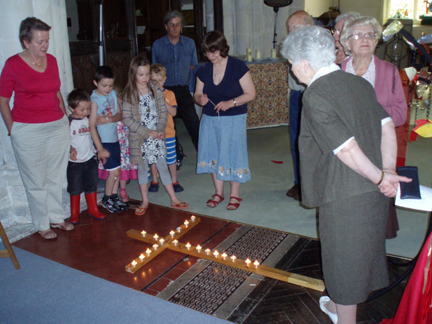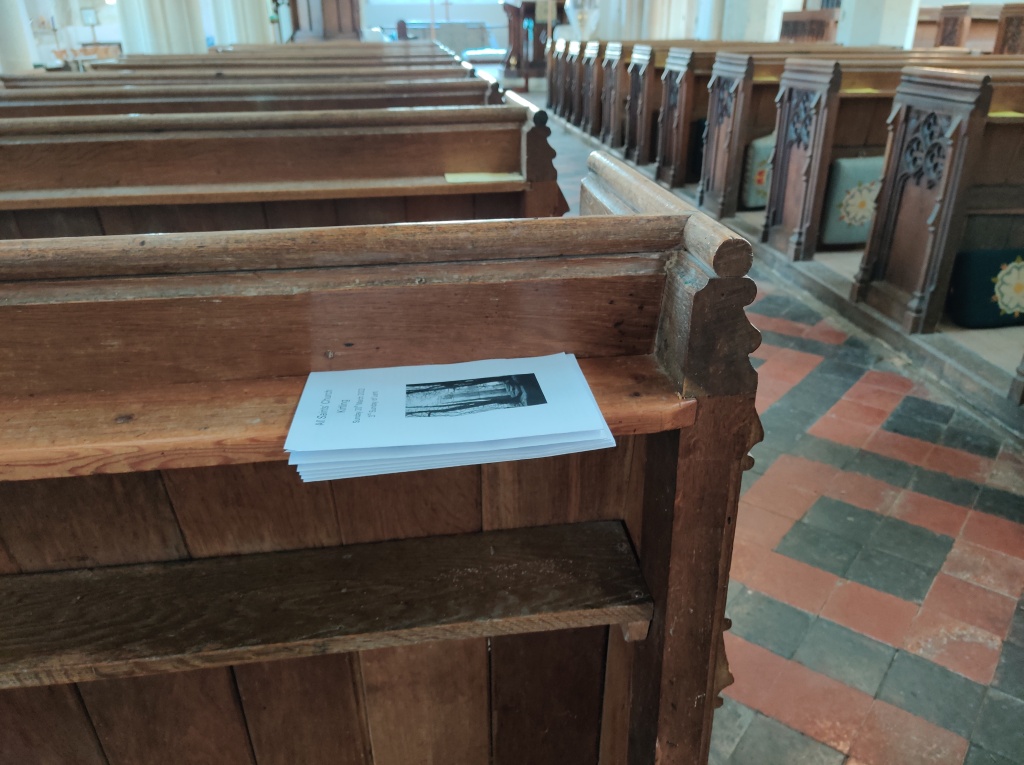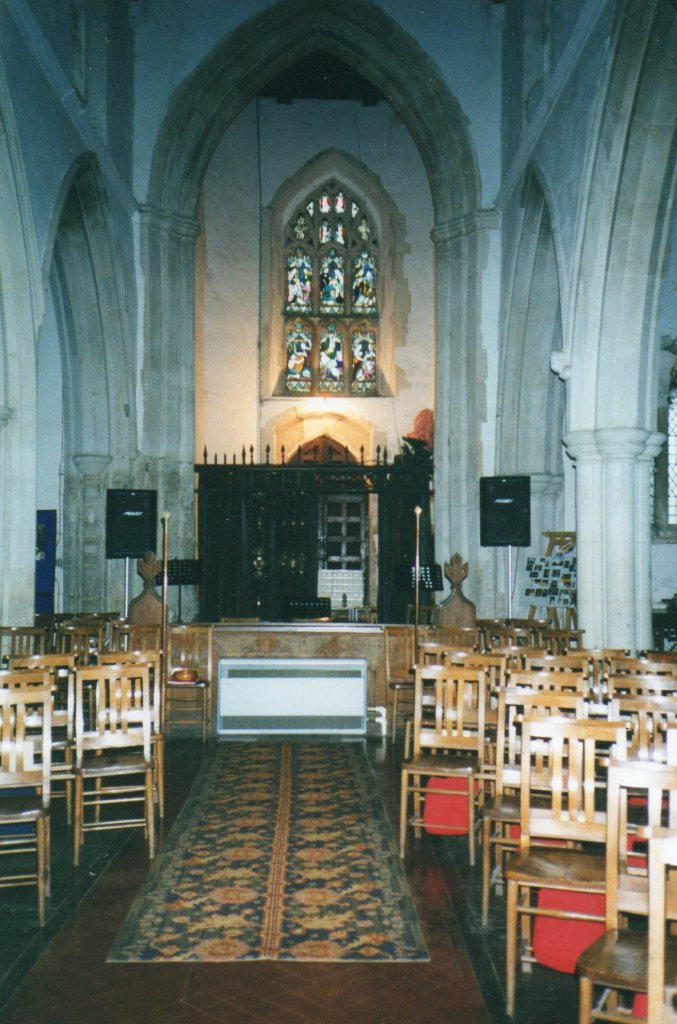Turning Point is a series of blog posts looking at how change happens in churches by reflecting on my own story of change in a church context. You can read the introduction here: https://meristemweb.wordpress.com/2022/03/23/reflecting-on-change/
We had been given an unprecedented opportunity to make changes to the family service.
This freedom extended to how we organised ourselves, logistics and what we did with the children and adult parts of the service. So what did we do?
Organisation:
We could have set up a committee.
But committees meant formality, agendas, minutes and items deferred to the next meeting. Most of us had had enough of being on committees.
Instead, we went for something much more informal – a loose group of people who came along to meetings. Even now I’m not sure how much this was a conscious decision or something that just evolved.
I called this group Planning but others called it the Family Service Group or the Family Service Lay Team. It was open to anyone interested, who could come along and say as much or as little as they liked. There was no chair though David tended to drive the meetings and keep us to the point. I think someone kept notes…
Even now, over 25 years later, I have never been part of something that worked as well as Planning did.
But why did it work so well? Firstly, we had the authority to take action and make changes. Obviously, Paul had the final say but in practice he allowed us to have the discussions and make the decisions. (Later on, Judith, his successor, used to come to meetings but acted as part of the team.)
We were also starting completely from scratch. There was no one to complain that we were ditching traditions or that something had been tried before and could not possibly work. We were free (or naïve enough!) to try things and see if they worked.
This freedom meant we owned the project. This was no top down initiative but something that was developing from the ground up – and because it was ours we committed to it, holding weekly meetings (at first) and putting in the time and effort needed to make the changes.
We had a surprising amount of agreement at Planning meetings. Many of the new ideas seemed to have a touch of inspiration about them. When someone made a suggestion there was often a feeling that this was expressing something that we had all felt or that the idea was just right for us.
How can we tell when something is God?
Logistics
Integral to our vision of a new family service was our plan to have two children’s groups which would offer the children new and exciting ways of being church without losing sight of the beliefs and stories of the Christian faith. As we became more experienced, we hoped, so the children’s work would develop.
It was the potential of Finchworth church to have space for two groups that had led to the decision to place the Family Service there three Sundays out of four. The reality was not so rosy. The vestry was small and cramped. The central heating boiler took up about a third of the available space. It was so noisy that when it was running we felt we had to shout over it.
The space under the tower was not much better. It was about three metres square but some of this was taken up with cupboards and a large table. The stained glass window, about twenty feet above our heads, offered little natural light. The area was so dark that the single light bulb situated above the large west door needed to be permanently on. The bats were at their most active, so there were droppings everywhere. Still we felt it had possibilities. We could get rid of a lot of the junk and put in a couple of child-sized tables and some small chairs. Hugh and Bridget had recently been involved in clearing out a school and knew where we could get furniture cheaply.
It was while we were sorting through the junk that someone, probably Hugh, looked up and had a bright idea.
“What about the bell ringing room?”
Sixty feet above our heads was the “ceiling”, the floor of the bell-ringing chamber. Finchworth had had a strong group of bell ringers for many years, so the chamber was in regular use. Bridget unearthed the key from its hiding place and we all climbed the fifty-seven steps up the spiral staircase to have a look.
Apart from a few chairs and the bell ringing ropes the chamber was empty. It was light, airy, spacious and (miraculously) bat free. Another advantage was that it was so far away from the congregation that unless the children were very noisy they would not be heard during the service. It was certainly the best place in any of the four churches for children’s work to take place. Providing, of course, that you don’t mind spiral staircases with fifty-seven steps and no rope to hold onto…
After discussion with Paul and the bell ringers, it was agreed that we could use it so we decided we would use the bell ringing room for the “older” children – Kitty, who was now just six, and Timothy and James, who were both four. Our toddlers would use the space under the tower – it wasn’t remotely soundproof, but we hoped we would be able to co-exist with the adult service.
Worship
It was easy to say that we wanted a service with a strong focus on the needs of the children, but how would this work in practice? Several of us had strong ideas about what we wanted. If the children were in the service, I wanted them to be involved. David, who was involved with leading quiet days and retreats, wanted a strong emphasis on prayer. His wife Penny was concerned about the way people departed abruptly at the end of the service.
We began by looking at the structure of the service itself. Did we want the children to be out in groups the whole time? At the beginning of the service? Or at the end? We spent a lot of time at the early meetings discussing this.
We all felt that it was important that the children spent some time in the service. We did not want a separation between the adult church and “Sunday School.” We wanted a Family Service, where for at least part of the time, we were all worshipping together as the family of the church.
Equally, Bridget and I, supported by a couple of parents with toddlers who came occasionally, felt that it was important for the children to be in age related groups for at least half the service. (I don’t think this now!)
In the end we decided that we would begin worshipping together and that this early part of the service would focus on involving the children. The children would then go out to their groups while the remaining congregation would be able to take part in an adult service. We would come back together at the end of the service.
Prayer was something we believed needed to be central to any service. Several of us had taken part in Sister Kathleen O’ Sullivan’s Light Out of Darkness course which has a strong emphasis on personal prayer and times of quiet. We hoped to pass this onto the children – and to the rest of the congregation. We wanted the children to learn to pray in their own words, however simple those words might be. We also felt that the children needed some tangible expression of their prayers, a way of expressing them symbolically.
I think it was Bridget who came up with the idea of a Prayer Tree. The children, with the help of their parents, could write their prayers on a “prayer leaf”. They could come up to the front and read their prayer – or give it to the leader to be read for them. They would then hang their prayer on the prayer tree.
One of the parents volunteered to make a Prayer Tree. When finished, it stood about three feet high. It was made out of wood with a painted trunk. The top was covered with green crepe paper to represent leaves and it had several hooks on which the children could hang their prayer leaves. The children’s prayer time would be followed by a short time in which adults would be invited to pray, either out loud or in silence.
We decided to begin the service with an opening chorus and a short prayer and then follow this with the Prayer Tree. We would then have a time of choruses – including action choruses that the children could take part in. We also decided to purchase some instruments – bells, plastic drums and shakers – so that the children who were too young to read could take part. The children would then go out to their groups.
What would we do with them? Toddler church had often used material from Splash (Scripture Union) and we felt it was worth looking at other publications to see if there was anything suitable for the older children. Bridget and I spent quite a time browsing through local Christian bookshops but we never found anything that we really liked. Most of the time we just did our own thing!
Meanwhile someone had had the bright idea of a monthly theme that all age groups could work on together. The more we discussed this idea the more we liked it. If the theme was Paul, for example, then the little children could be told a very simple story about one of his adventures with lots of pictures and actions. The older children could approach the story through art or drama and the adults could have a talk about his encounter on the Damascus Road or his reception in Corinth. When the children came back into the service they would be invited up to the front to share what they had been doing in their groups. The parents would know what the children had been doing and could talk to the children about it on the way home. It would also give a focus to the All Age service when the children could present some of this work.
What should we choose as our first theme? Well the beginning seemed a good place to start… We decided to spend the first seven weeks looking at the different days of Creation. We would not have an All Age service during September in order to give the Finchworth Family Service a chance to become established.
David took most of the responsibility for developing a more adult service for the time that the children were out in their groups. It was based mainly on Morning Worship from the Anglican Alternative Service Book (the predecessor to Common Worship.) This included confession, prayers and creed and also the canticles – the Venite or the Te Deum, the Jubilate or the Benedicite – and the collects. A psalm might be said, followed by a Bible reading and a short talk. It sounds very straightforward but in practice there was a lot of discussion.
Most of us were not experienced at leading a service. David and Mike were – but then they also had to do the music and it seemed likely that they would have to give many of the talks. To make things easier we decided to have two leaders, Leader A and Leader B who would alternate throughout the service and share the responsibility.
At that time the Anglican church in our diocese allowed lay people to give a short talk (but not a sermon) during a service. David and Mike had stood in for Paul, the vicar, when he was away and had some experience of doing this. Mike was widely read and had a scholarly approach to giving the talk. David had been involved in leading several Quiet Days and Retreats. Both Bridget and Hugh volunteered to give the occasional talk – providing David or Mike was prepared to help them with it.
Back in the service the children would share what they had been doing. We would then have another hymn and the collection, which would be taken by the children. A final prayer, a blessing and then a final hymn would finish the service.
“And what about coffee after the service?” suggested Penny.
For many churches this happens so automatically that doing it has never been questioned. But our lack of kitchen facilities made providing coffee such a logistical nightmare that it was something we only did on special occasions. However, for this new beginning it seemed right that we should have some time at the end of the service to build relationships and encourage newcomers. We decided to try it. The only tap at Finchworth was outside, as far from the main door as it was possible to get, so a collection of thermoses seemed a more practical option than filling the urn. A coffee rota was drawn up, with people taking it in turns to take the mugs and thermoses home to wash up and provide the following week’s coffee.
It was Sunday 10th September… we were ready…
But were we making real changes?
Turning Point 8: Real change? https://meristemweb.wordpress.com/2022/10/04/turning-point-8-real-change/









